When to Cycle in Portugal?
Seasons matter when you’re riding in Portugal! Find out when to go, where to ride, and how to keep your wheels — and mood — rolling.
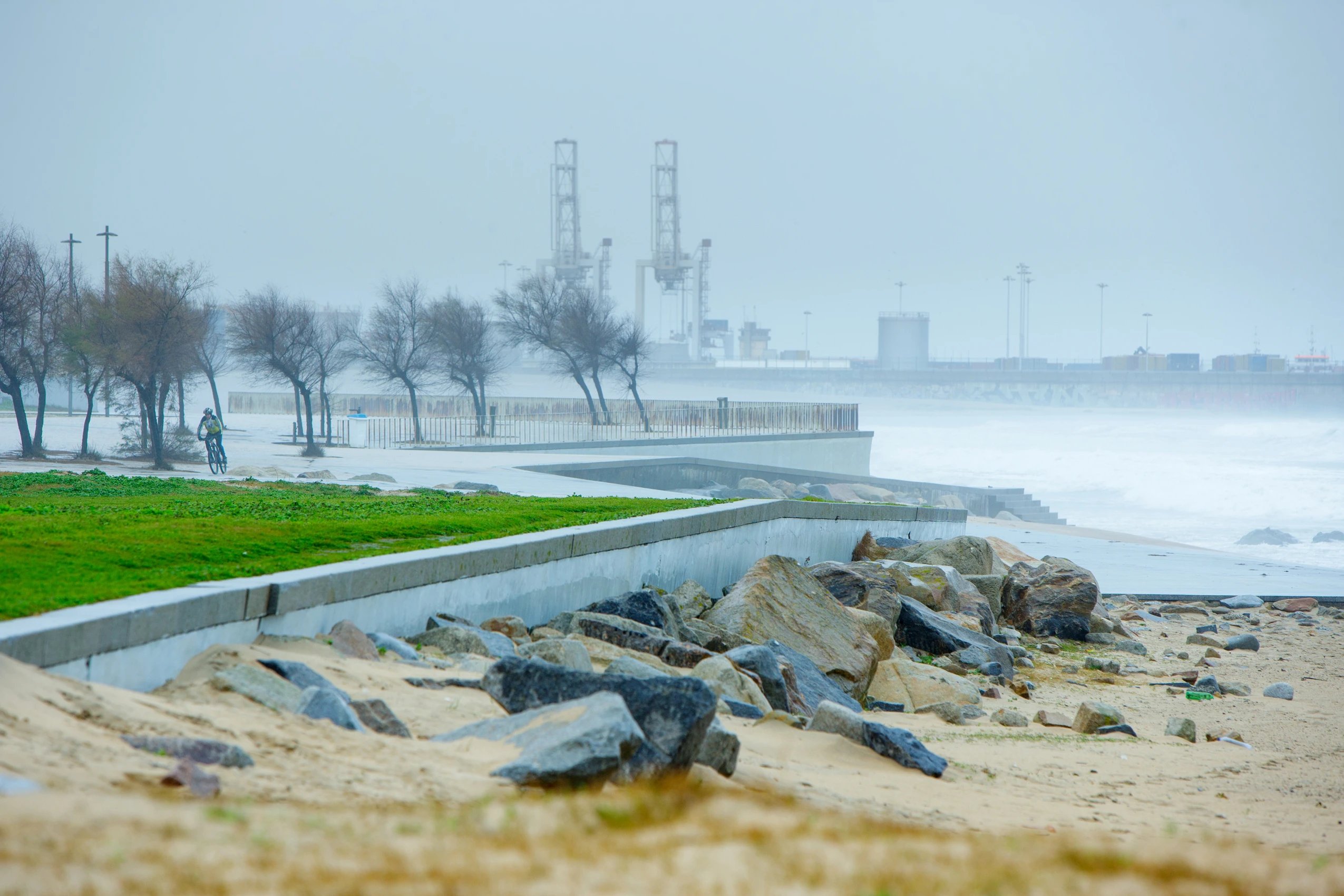
Quick links
Portugal is a year-round cycling destination, blessed with a mild climate, diverse landscapes, and more than 300 days of sunshine in some regions.
In general there’s always somewhere in Portugal with great conditions for biking.
In fact, it's often called Europe’s favourite winter cycling destination, thanks to the warm, dry weather in the Algarve and Madeira while much of the continent is still under rain or snow.
What should you know at a glance?
- Cycling possible year-round – best conditions vary by region
- Spring: Great across most regions, might rain in the north
- Summer: Too hot inland, best in the north and on the coast
- Autumn: Ideal in the south, rain returns in the north by November
- Winter: Ride in the Algarve or Madeira, avoid inland and north
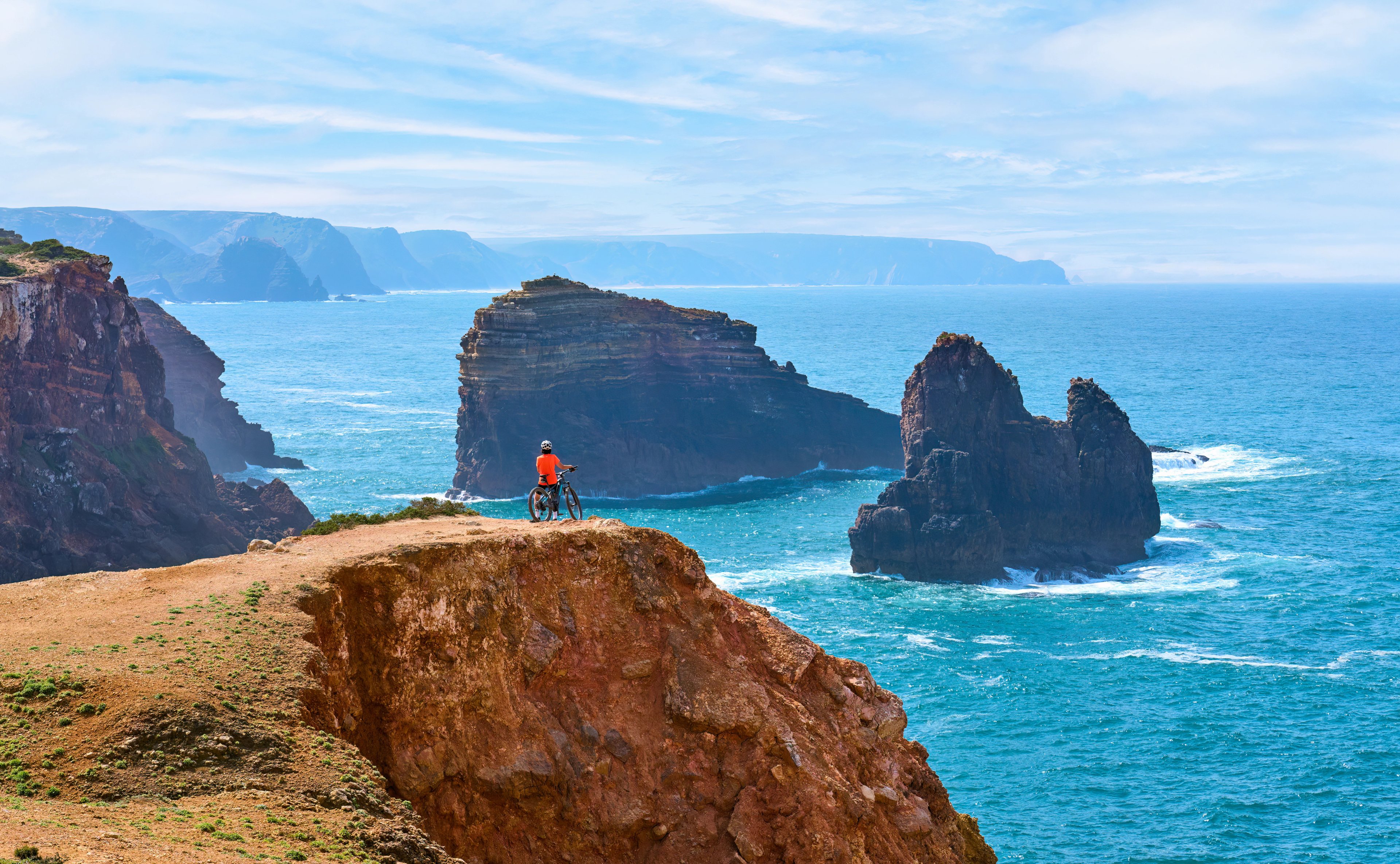
That said, the best time to cycle in Portugal depends on where you're headed and what kind of ride you’re after.
In this guide, you’ll find everything you need to know about Portugal’s climate, including a month-by-month breakdown and detailed tips for riding in each of the country’s top cycling regions.
Month-by-Month Breakdown


January
January is the heart of winter in Portugal, but it still offers surprisingly good riding in the south.
The Algarve is your best bet, with mild temperatures around 15–17°C (59–63°F) and relatively dry conditions.
Madeira is also a great option thanks to its subtropical climate, though brief showers are common.
Avoid the north and central regions, which tend to be rainy, cool, and windy this time of year.

February
Similar to January, February brings cool mornings and short days, but it’s still a viable riding month in the Algarve and Madeira, especially for those looking to escape northern European winters.
Expect light rain in central Portugal and windier conditions in the north and coastal zones.
Inland and northern Portugal are best avoided unless you’re prepared for wetter rides.
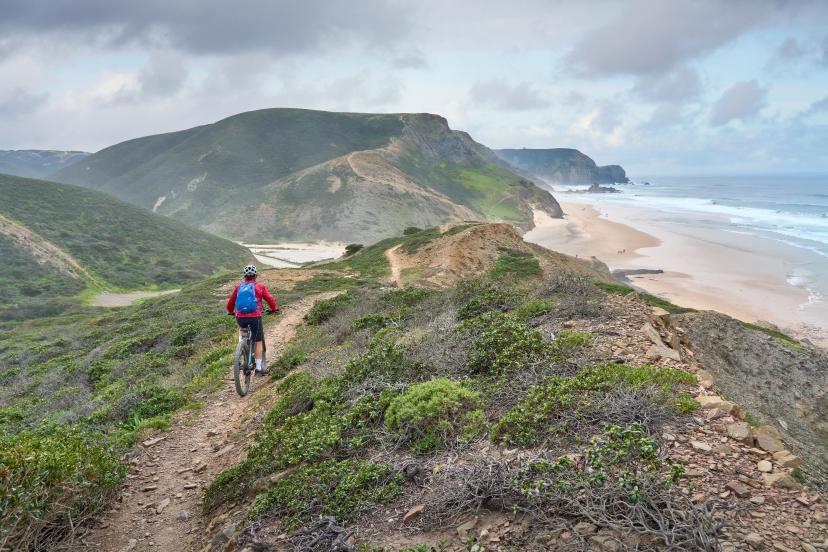
March
Spring starts to show in March, bringing longer days and warming temperatures.
The Algarve, Alentejo, and Lisbon Coast are excellent choices this month.
Expect daytime highs between 17–20°C (63–68°F), with spring flowers beginning to bloom.
Occasional showers can linger, especially in the north, but overall conditions improve rapidly as the month progresses.
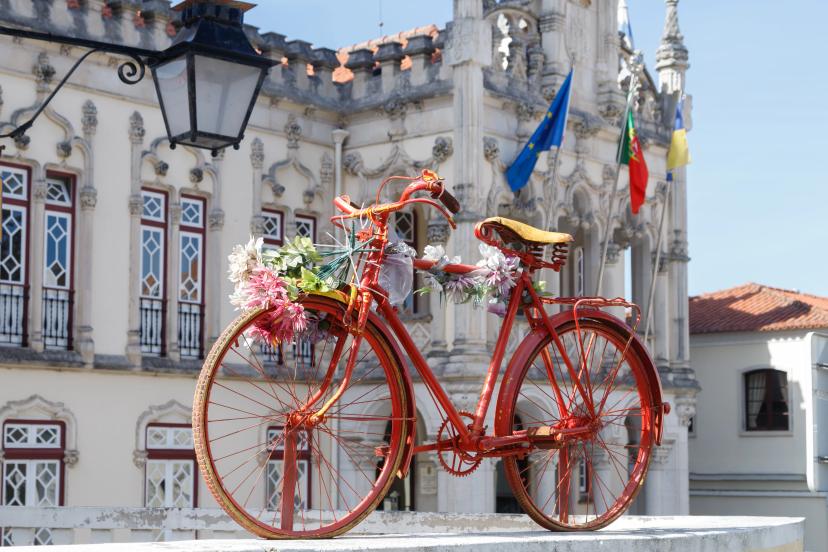
April
April is one of the most beautiful times to cycle in Portugal.
Wildflowers, green hills, and pleasant temperatures make this an ideal month for riding in Alentejo, Central Portugal, and even parts of the Douro Valley.
Expect some spring showers, especially in the north and mountains, but the landscapes are at their most vibrant.
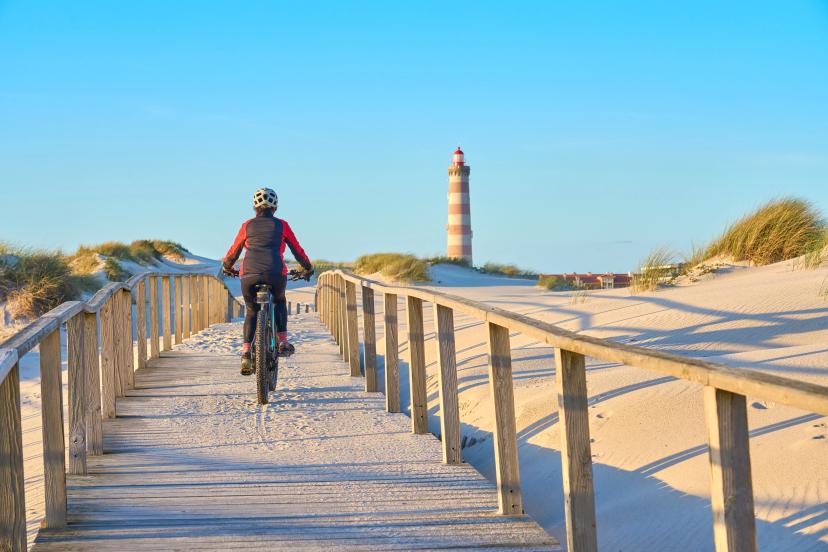
May
May offers some of the best cycling conditions across all regions.
The weather is warm but not yet hot, rain becomes rare, and the countryside is lush and green.
Whether you're heading to the Azores, Lisbon coast, or Douro Valley, this is peak season for comfortable, scenic rides.

June
June is warm and sunny, with excellent conditions for riding in northern Portugal, the Douro, and coastal central regions.
Inland areas like Alentejo start to heat up, reaching highs of 30°C (86°F) or more, but morning rides are still manageable.
This is a perfect month for longer routes before the peak summer heat sets in.
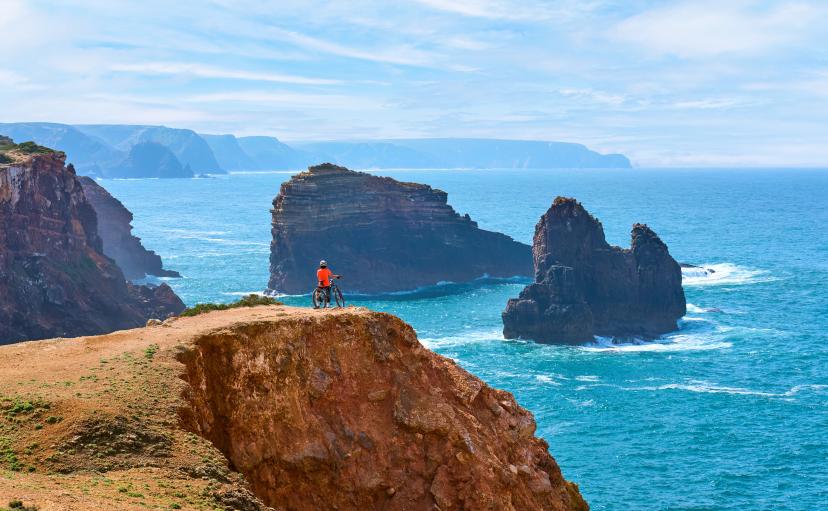
July
July marks the beginning of serious heat in inland Portugal, with Évora, Beja, and other interior areas often soaring past 35°C (95°F).
For cooler rides, head to the north, the Atlantic coast, or higher elevations.
Coastal winds pick up in the afternoons, so early starts are best.
Avoid inland regions unless you’re prepared for intense heat.
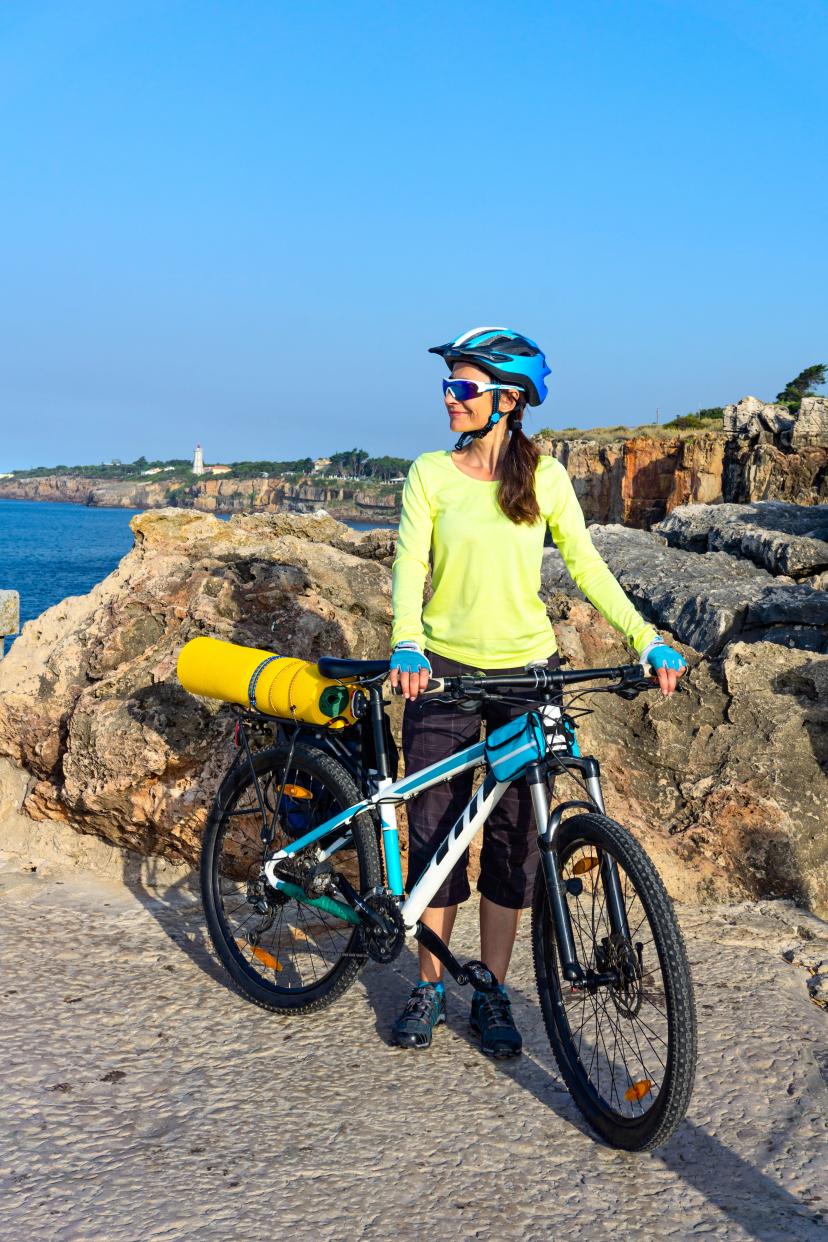
August
August is the hottest and most crowded month in Portugal.
Coastal areas like the Silver Coast and northern beaches offer refreshing breezes and lower temperatures, while inland regions are best skipped due to extreme heat.
Stick to coastal routes and start your rides early in the day to avoid the midday sun.
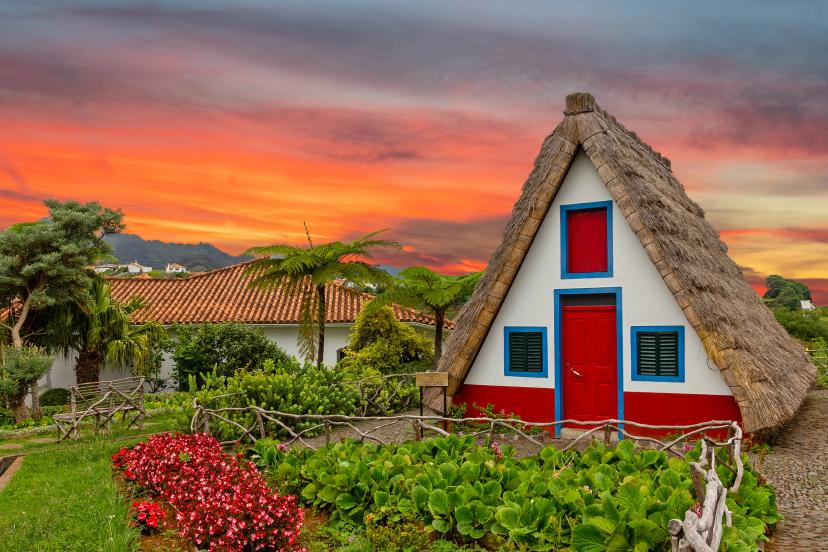
September
September is a sweet spot: summer lingers but without the peak heat or crowds.
This is one of the best all-around months for cycling anywhere in Portugal — from the Douro and Lisbon Coast to the Algarve and Azores.
Temperatures range from 24–30°C (75–86°F), and conditions are typically dry and stable.

October
Temperatures cool to a comfortable 20–26°C (68–79°F), and sunny days are still plentiful.
October is ideal for southern and central Portugal, especially the Algarve, Alentejo, and Lisbon area.
Rain may begin to appear in the north, but the south remains dry and warm — perfect for autumn riding.

November
November sees a shift to cooler, wetter conditions, particularly in northern and central Portugal.
However, the Algarve and Madeira remain great options, with mild weather and plenty of sunshine.
Inland and northern regions become less reliable due to increased rainfall.

December
December is quiet and mild in the Algarve and Madeira, making them two of Europe’s best winter cycling destinations. Expect average highs of 15–18°C (59–64°F) and minimal rain along the southern coast.
The rest of the country, especially the north and interior, is generally too cold and wet for enjoyable rides.
Best Time to Ride by Region
Here’s a closer look at the top cycling regions in Portugal, including their ideal seasons & climate tips.
North Portugal (Minho, Douro, Porto)

Climate: Temperate oceanic. Cool, green, and relatively wet.
Best Time: May to September
Why: Mild summers and lush landscapes make this a top summer cycling destination.
What to Expect: Daytime highs of 22–26°C (72–79°F) in summer; rainier from October to March, with up to 180+ mm/month in winter.
What to Watch Out For: Windier and wetter than the rest of the country. Pack rain gear in spring and fall.
Pro Tip: Ideal for scenic vineyard rides and riverside cycling — great in summer when other regions are too hot.
Central Portugal (Lisbon, Sintra, Coimbra)

Climate: Mediterranean with Atlantic influence. Warm and seasonal.
Best Time: March–June, September–October
Why: Great balance of warm temperatures and low rain in spring and fall.
What to Expect: 20–28°C (68–82°F) in peak months. Summer heat is tempered near the coast but hotter inland.
What to Watch Out For: July and August can push 30°C+ (86°F+); spring showers may linger in March.
Pro Tip: Combine riding with cultural sightseeing — just ride early in summer to beat the heat.
Alentejo (Évora, Beja, Monsaraz)

Climate: Continental Mediterranean. Hot, dry summers; mild winters.
Best Time: March–May, late September–early November
Why: Perfect shoulder seasons for big sky rides and countryside loops.
What to Expect: Spring highs of 22–27°C (72–81°F); midsummer regularly exceeds 35°C (95°F).
What to Watch Out For: Little shade and almost no rain in summer. Risk of overexposure and heat exhaustion.
Pro Tip: This region is best avoided in July–August unless you start at sunrise.
Algarve (Faro, Lagos, Tavira)

Climate: Mediterranean. Warm, dry summers and very mild winters.
Best Time: Year-round, especially October–April
Why: Portugal’s most reliable cycling weather. 300+ sunny days/year.
What to Expect: Summer highs of 29–32°C (84–90°F), winter highs of 15–18°C (59–64°F). Minimal rainfall.
What to Watch Out For: Inland Algarve can be hotter and less breezy — stay near the coast.
Pro Tip: One of Europe’s top winter cycling destinations thanks to dry weather and mild temps.
Madeira

Climate: Subtropical oceanic. Mild temperatures year-round with microclimates.
Best Time: April–June, September–November
Why: Beautiful weather and quieter trails outside peak tourism season.
What to Expect: 18–25°C (64–77°F) year-round on the coast. Frequent but brief rain in the north and mountains.
What to Watch Out For: Sudden weather changes due to terrain — it can be sunny on one side of the island and raining on the other.
Pro Tip: The south coast is warmer and drier — perfect base for rides. Start early for clearer skies.
Azores (São Miguel, Pico, Terceira, etc.)

Climate: Humid subtropical. Mild, rainy, and very green.
Best Time: May–September
Why: Summer offers the driest and warmest window, perfect for island-hopping and volcano views.
What to Expect: Summer highs of 22–26°C (72–79°F), with occasional mist and short rain bursts. Winters are mild but very wet.
What to Watch Out For: Very changeable weather — “four seasons in a day” is normal.
Pro Tip: Pack layers, check forecasts constantly, and enjoy the surreal landscapes — rain or shine.

Where This Fits in Your Ride Planning
Now, you have a fuller picture:
- North = cooler, wetter, and windier — better for summer cycling.
- South = warmer, drier, and generally less windy — great year-round.
- Inland = hotter with low wind, but intense summer heat.
- Coastal zones = windy in summer afternoons — perfect for confident riders who enjoy a breeze.
- Atlantic Islands = green, mild, and unpredictable — joyful rides all-year round
Where to Check the Weather Before Your Ride
Checking the forecast each day is essential, especially in spring and autumn when the weather can change quickly.
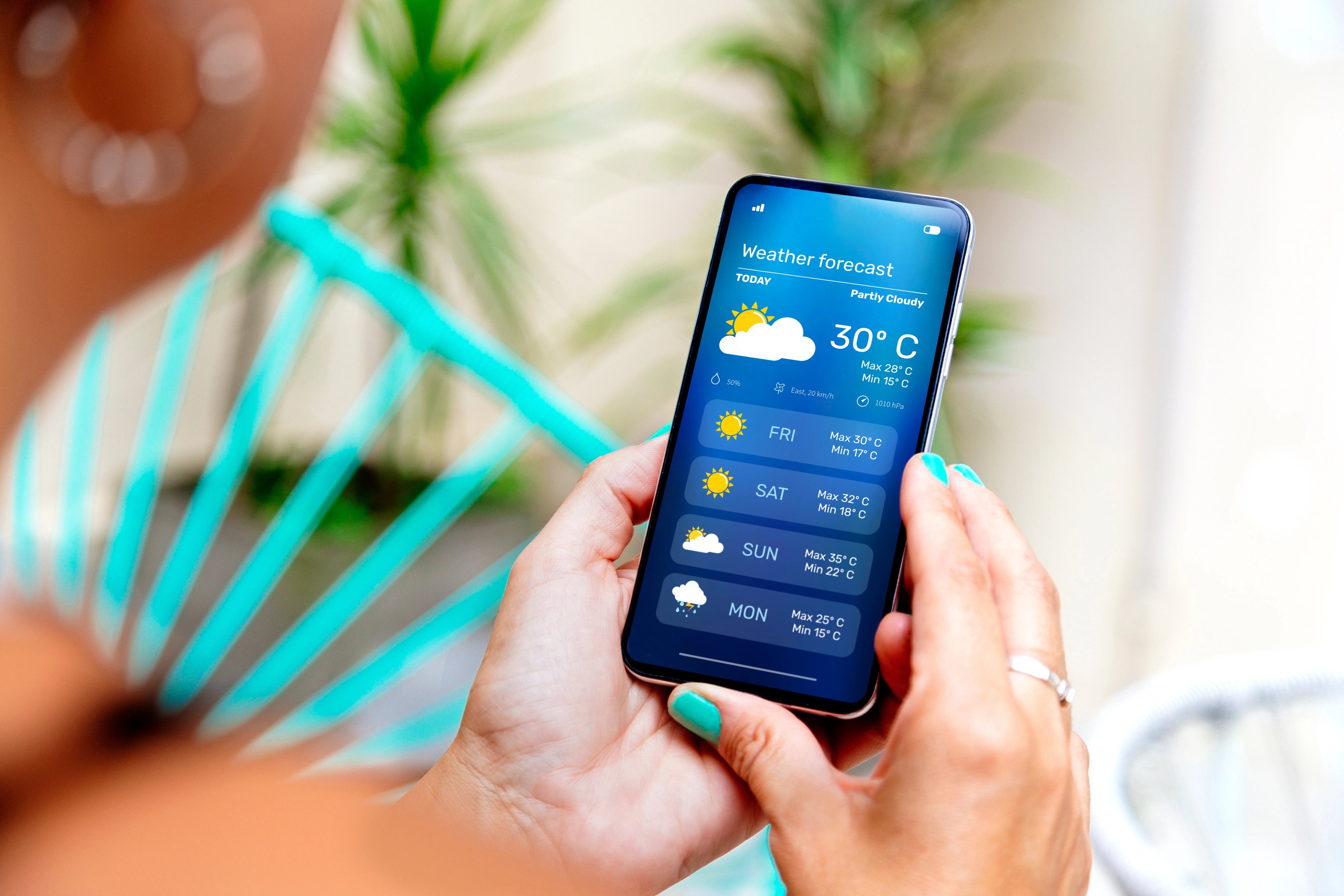
Here are the most reliable sources for local weather forecasts in Portugal:
- IPMA (Portuguese Institute for Sea and Atmosphere)
Portugal’s national meteorological service provides hyper-local forecasts, rain radar, wind maps, and even sea conditions. It’s the most detailed source for regional forecasts and short-term updates, and available in English.
- Weather.com (The Weather Channel)
Type in your destination (e.g., Évora, Porto, Lagos) and get hour-by-hour or 10-day forecasts. It also includes UV index, wind speed, and radar — all helpful for cyclists.
This interactive app is great for checking wind forecasts, which are especially important when cycling in coastal areas. You can view wind strength, direction, and compare several forecast models.

Knowing when to cycle in Portugal ensures you’ll have the best possible experience.
Our top cycling tours in Portugal are built around regional weather patterns so you can enjoy the ride.
Want help choosing the right trip? Reach out to us and let’s map out your Portugal cycling adventure.

Hassle-Free
We handle itineraries, accommodations, and anything else you prefer not to deal with, so you can enjoy a carefree holiday.

Completely Customizable
Flexibility is our middle name — whether you want more or less, or just beyond ordinary, we’ll make it happen.

Book with confidence
We are a financially protected company, fully bonded and insured, keeping your money safe and allowing you to travel with confidence.

Unbeatable support
Our 24/7 customer support is where we show our passion, bringing you a better experience by making your well-being our number one priority.

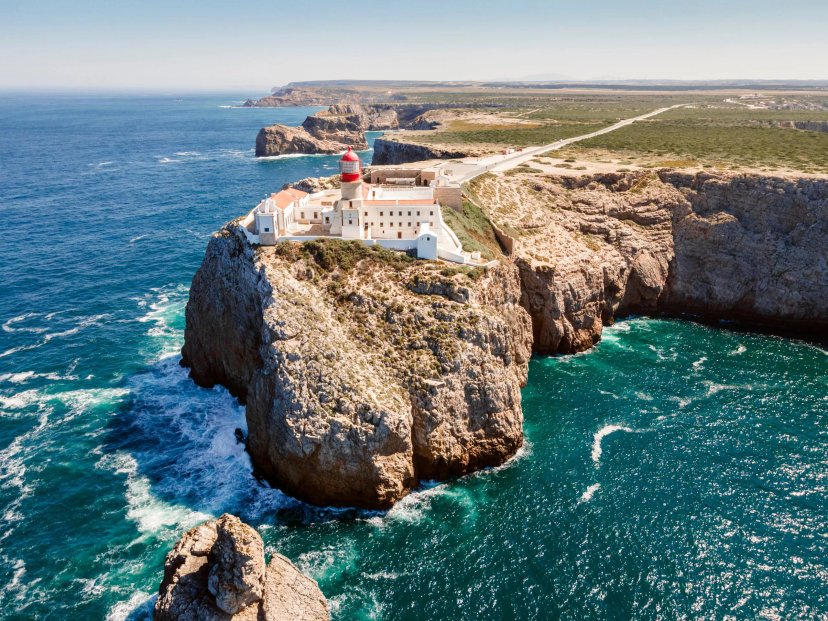


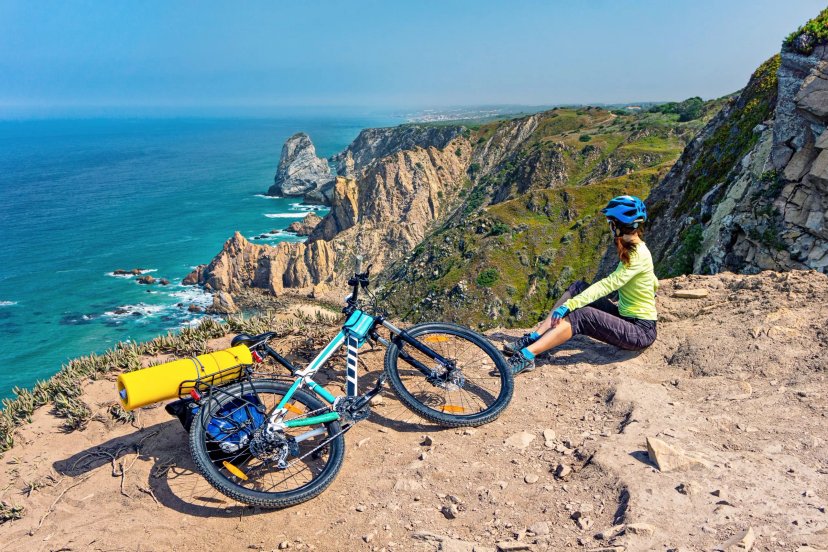
.jpg&w=3840&q=75)
